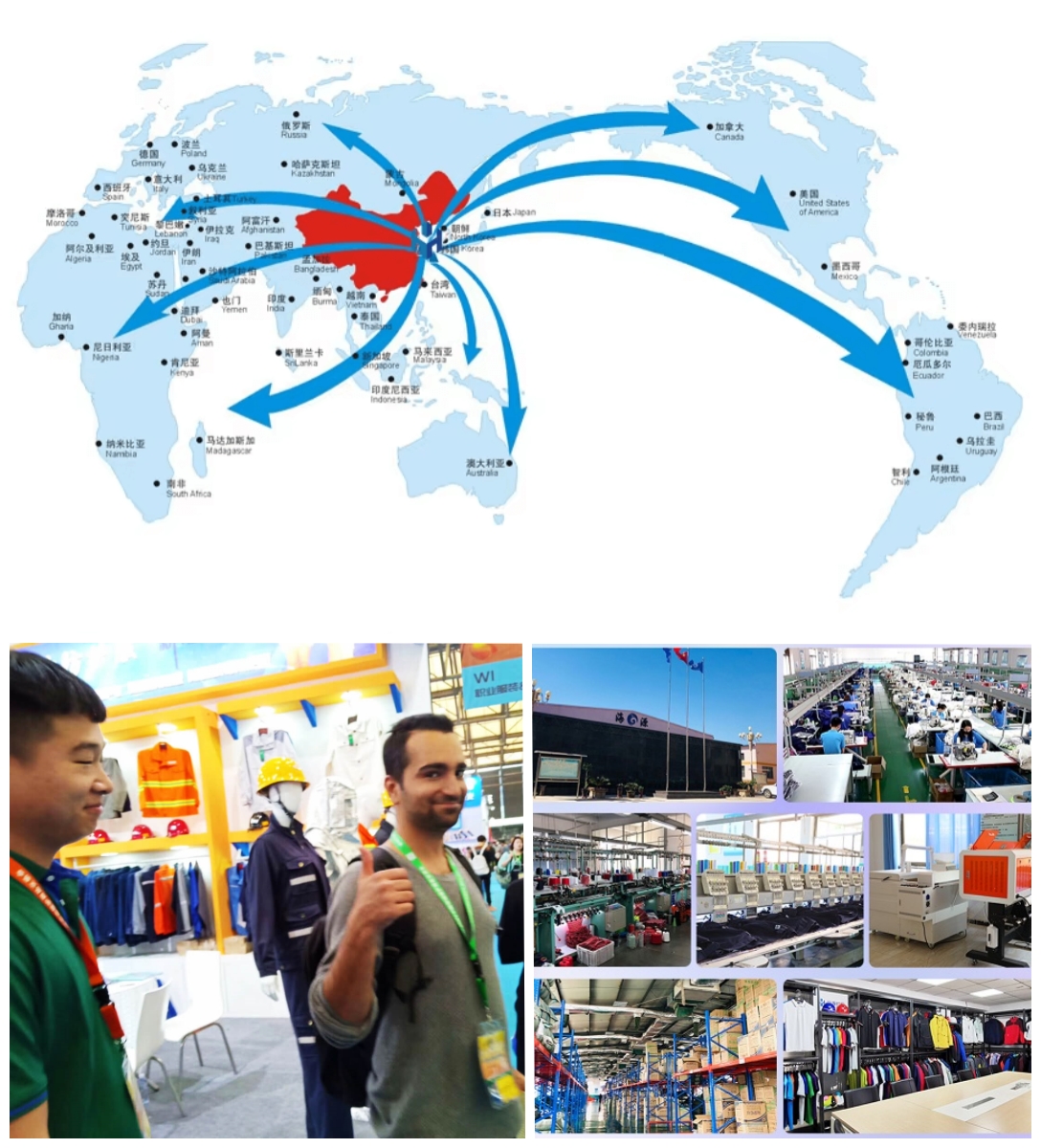Author:HAIYUAN TIME:2025-06-16Read:
Importing Chinese workwear for the first time is notoriously tricky – 80% of first-time importers face delays, compliance failures, or unexpected costs. Below are the top 5 pitfalls and tactical solutions to avoid them:
Why you get stuck:
Workwear requires safety certifications (e.g., ANSI/ISEA for hi-vis, EN ISO 20471 for EU).
Chinese suppliers often provide fake or expired certificates.
Survival strategy:
Demand test reports from accredited labs (SGS, TÜV Rheinland).
Verify certs online:
ANSI: www.ansi.org
CE: Check via EU’s NANDO database
Use payment terms: 30% deposit, 70% after certification verification.
Why you get stuck:
Workwear is heavy/bulky (e.g., flame-resistant coveralls). Sea freight charges by volume (CBM) OR weight – whichever is higher.
Cost hacks:

Compress garments in vacuum bags (reduces volume by 40%).
For LCL shipments:
Chargeable weight = Actual weight vs. Volume weight (L×W×H×167)
Port tip: Ship via Qingdao (lower fees than Shanghai/Shenzhen).
Critical compliance gaps:
| Region | Key Requirements | Common Failure Points |
|---|---|---|
| USA | FTC care labels + fiber origin | Missing English-only labels |
| EU | CE mark + REACH chemical compliance | Excess AZO dyes/formaldehyde |
| Canada | Hazardous Products Act (HPA) | Non-compliant reflectivity |
Solution:
Attach compliance kits to every shipment:
Sewn-in care labels
Printed CA Prop 65 warning (if applicable)
Supplier’s Declaration of Conformity (SDoC)
Red flags in workwear production:
Switching fabrics (e.g., using non-flame-resistant material).
"Standard sizes" that fit poorly (Asian vs. Western body types).
Due diligence:
Order pre-shipment samples in all sizes/colors.
Hire third-party inspectors (e.g., AsiaInspection) to:
Verify fabric composition (lab test)
Measure 3 random pieces per size
Check stitching durability (pull test)
First-timers overlook:
Duty spikes: Workwear tariffs up to 19.3% (USA) + anti-dumping duties.
Demurrage fees: $150–$500/day if customs delays container pickup.
Financial armor:
Calculate TRUE landed cost:
[Product Cost + Shipping + Duties + Insurance] × 1.1 (unexpected fees buffer)
Use duty-optimization tactics:
Ship flame-resistant gear under HS 6211.33.1000 (lower US duty vs. 6211.43)
For EU: Claim GSP preferential duty if importing >€1M annually
Audit supplier certifications before signing contract
Ship via air freight for first order (faster problem detection)
Insure with Lloyd’s of London (covers compliance failures)
Reserve $5k–$10k for unexpected customs bonds/fines
Real-World Example:
A client imported 10,000 hi-vis vests from Guangzhou → Chicago:
Mistake: Skipped pre-shipment inspection.
Result: Vests failed ANSI 107 reflectivity tests → $28K recall.
Fix: Implemented batch testing – saved next order.
Bottom line: First-time workwear imports succeed when you trust but verify. Allocate 20% extra time/money for compliance hurdles – it’s cheaper than losing a whole shipment.
As a leading manufacturer of workwear and protective equipment in China. Our company can provide customers with different types of Workwear. You can choose styles directly from our website. In addition, if you have customized style design drawings, we can provide OEM service for you.
Back to Top
+8619948039507
